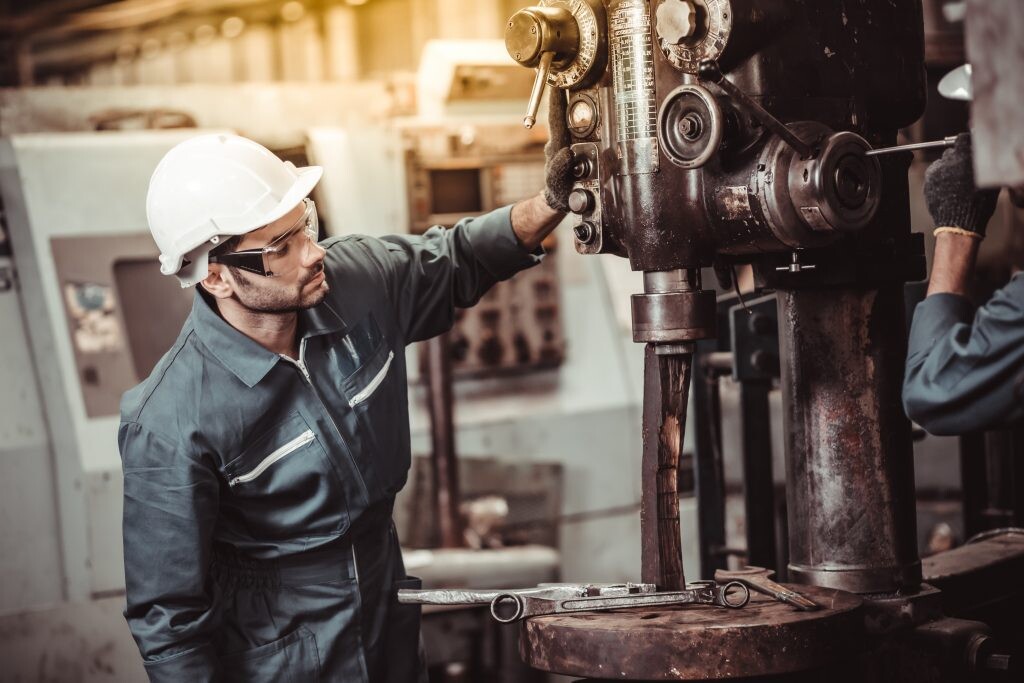Nov 10, 2022 - 3-5 min
Why Locking Devices are Holding Back Your Marine Repair Processes

As a marine manufacturer, you need reliable solutions for assembly and facility repairs. Specifically, these solutions must offer more than just a quick fix. The solutions should help you assess issues fast and efficiently with long-term results while also streamlining repair processes by simplifying your storage space. However, historically, marine manufacturers have relied on locking devices to solve mechanical problems throughout their facilities. Unfortunately, locking devices have often increased downtime, caused more issues in the long run and created unorganized storage systems that are difficult to utilize when managing repairs.
Fortunately, adhesives provide the reliable, simple, fast and long-term solutions you need. Find out how they address repair and maintenance challenges commonly experienced in marine manufacturing facilities.
Challenge #1: Locking Devices Increase Downtime and Costs
When a maintenance problem occurs within machinery, manufacturers must act quickly to fix the problem so that it doesn’t take valuable time away from a typical production schedule. Typically, this means finding the right-sized nuts and bolts, which already can be time consuming, given the large inventory.
Additionally, if manufacturers rely solely on locking devices, such as nuts and bolts, to solve mechanical issues, it’s possible this solution could cause more issues later and lead to more downtime. This is because locking devices can break apart in machinery due to vibration caused by not having 100% metal-to-metal contact. Additionally, lacking this contact can cause corrosion over time, as moisture or chemicals have room to settle in between the nuts and bolts.
Manufacturers also need proximity to the mechanical problem within a machine to install a locking device. This requires them to assess the best way to safely and efficiently access the problem area, which could take extra time if the problem is in a place that’s hard to reach.
All of these aspects can increase downtime and costs as well as delay boat building operations, which makes it difficult for a manufacturer to keep production costs low.
How Adhesives Reduce Downtime and Costs
Rather than using different sized nuts and bolts depending on the repair need, adhesives yield high-strength bond across all machinery, mitigating time spent finding the right part amongst a large inventory.
Additionally, they provide 100% metal to metal contact, providing a unitizing bond that results in less downtime and costs. In particular, unlike locking devices, they serve as a blocking agent, eliminating air spaces that would otherwise result in vibration or enable moisture or chemicals to seep in and cause corrosion.
Further, adhesives offer quick, precise application and can be applied via injectors to easily enter small holes, cracks or gaps. This eliminates additional steps to open intricate areas of a machine for the repair, giving manufacturers safe and close to the damage to make the repair.
Challenge #2 – Locking Devices Require a Large Inventory
If manufacturers rely solely on locking devices for repairs, they must have numerous size options on hand to ensure they can correctly fit the nuts and bolts together as quickly as possible. This requires plants to keep inventory organized in order to quickly find the size they need.
However, even with a proper locking device inventory taking up room within a plant, if it’s not organized or being used efficiently, it may make it difficult for manufacturers to easily find what they need.
Further, if manufacturers are unsure of what locking devices will help solve the issue, they may have to transport multiple nuts and bolts from the inventory to the machine’s location before they can fix it.
While it’s necessary to have an inventory when using locking devices, having one can ultimately, negatively impact the repair process.

Adhesives offer versatility to be used for substrates such as plastic and metal, allowing manufacturers to rely on one product for repair needs rather than a full inventory of different locking device sizes. This eliminates the worry of having the right locking device size available.
How Adhesives Eliminate a Large Repair Inventory
Additionally, adhesives don't require a storage room. This means plant space can be utilized more efficiently, potentially saving energy costs and improving the facility’s carbon footprint.
Further, adhesives come in a small, lightweight bottle, which is easy for manufacturers to transport around a facility to the machine’s location for maintenance; they can easily keep the bottle in their toolkit at all times.
How Bostik’s Born2Bond™ Adhesive Solutions Help the Marine Industry
Bostik’s Born2Bond™ adhesives provide marine manufacturers clean, easy-to-use solutions throughout assembly, maintenance and repair.
In particular, Born2Bond anaerobic adhesives provide an alternative to locking devices by:
- Offering high performance to mitigate long-term problems: Specifically, our threadlocking adhesives offer 100% metal-to-metal contact to threads, which reduces vibration and corrosion that can lead to costly repairs and downtime. Additionally, they are oil tolerant to further improve performance and longevity.
- Increasing plant efficiencies to reduce overall costs: Available in multiple strengths and viscosities, threadlocking adhesives eliminate the need for a locking device inventory. For example, a small, 50ml bottle can be used 800 times when compared to locking devices for a 3/8” nut and bolt size, which aids in inventory cost reduction.* Additionally, the bottle size makes them perfect for on-the-go repair needs.
Interested in switching to adhesives for your marine manufacturing facility maintenance? Contact a Bostik representative to learn how Born2Bond adhesive solutions can help your make repairs quickly while ensuring high-performance.
*based off expert internal testing
